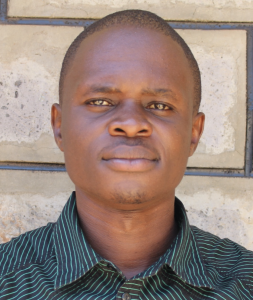Kapsotik Primary School is located in Vihiga County, Kenya. The school was started and is sponsored by a local church, and currently has a population of 433 students. They are taught by 13 teachers and supported by two non-teaching staff. The school faces quite a number of challenges as listed by Miss Winnie Odemo.
''First, we have three classrooms which are not being used as their floors are totally worn out. We have a challenge with the boys toilets, currently we have only two functional toilets which does raise an alarm," she said.
"Most importantly, water is scarce in the school. Our students do spend much of their learning time going to fetch water which does affect their performance negatively in the long run.''
Water
There is no water at school. Instead, students balance their books with a container full of water on the long walk to school every day. While one container might meet drinking needs, it doesn't help the school with cleaning chores. To clean latrines and classrooms, students have to go back out into the community to find water.
The most popular location is a hand-dug well, but the community members claim the water belongs to them, and they take precedence in line. There are seasons when there hasn't been much rain, and the water in the well dries up completely. It was one of these seasons during our first visit, and we followed the students around as they sought an alternative.
Any of these alternatives are open, polluted sources. Students found a pool of water between a cluster of rocks, and they told us that it wasn't the first time they had to draw water from there. Wherever these students end up, they're wasting valuable time that could have been spent in the classroom.
Sanitation
There are only two latrines set aside for the 234 boys, but they're in pathetic condition. Four others are for the girls, while two are for staff. There are LifeStraw containers around the classrooms that are often used for handwashing.
Here's what we're going to do about it:
Training
Training will be held for two days. The facilitator will use PHAST (participatory hygiene and sanitation transformation), ABCD (asset-based community development), CTC (child to child), lectures, group discussions, and handouts to teach health topics and ways to promote good practices within the school. The CTC method will prepare students to lead other students into healthy habits, as well as kickstart a CTC club for the school.
Handwashing Stations
This CTC club will oversee the new facilities, such as handwashing stations, and make sure they are kept clean and in working condition. The two handwashing stations will be delivered to the school, and the club will fill them with water on a daily basis and make sure there is always a cleaning agent such as soap or ash.
VIP Latrines
Two triple-door latrines will be constructed with local materials that the school will help gather. And with a new source of water on school grounds, students and staff should have enough to keep these new latrines clean.
Rainwater Catchment Tank
A 50,000-liter rainwater catchment tank will help alleviate the water crisis at this school. The school will also help gather the needed materials such as sand, rocks, and water from the spring for mixing cement. Once finished, this tank can begin catching rainfall that will be used by the school’s students and staff.
We and the school strongly believe that with this assistance, standards will significantly improve. These higher standards will translate to better academic performance!

 Rainwater Catchment
Rainwater Catchment
 Rehabilitation Project
Rehabilitation Project






































